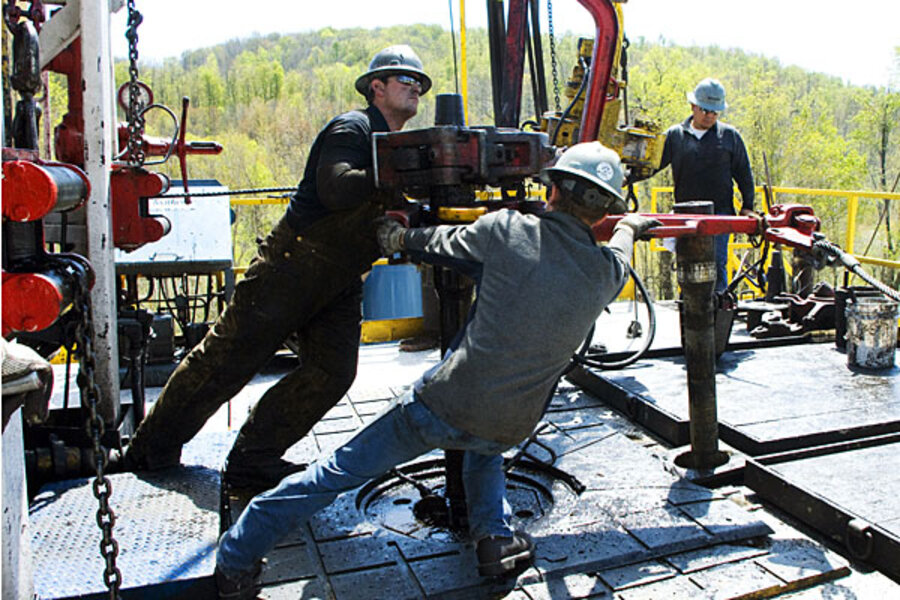What’s powering cleaner air? Natural gas.
Loading...
As the president unveiled new rules that seek to dramatically reduce carbon emissions from US power plants, we’re reminded of the dramatic progress we’ve already made as a nation in recent years. In his 2014 State of the Union address, for example, the president declared that no nation has reduced carbon emissions more over the past eight years than the US.
The not-so-secret weapon in America’s arsenal? Vast domestic supplies of clean, affordable natural gas that are transforming the economic, environmental, and energy security possibilities of our nation. As we mark the 70th Anniversary of D-Day, it’s only fitting to note that carbon emissions per American are now at their lowest level since President Eisenhower left office in 1961.
With or without these new rules, natural gas will continue leading the way in providing affordable energy to grow our economy and cleaner air for us all. In addition to carbon reductions, growing use of natural gas in the power sector has driven down sulfur dioxide and smog-forming nitrogen oxide emissions by more than two-thirds over the past two decades, all while creating jobs, reviving local economies and increasing the average US household’s disposable income by $1,200 this year alone.
Over the past decade, the shale gas revolution has catapulted our nation from an expected dependency on natural gas imports to becoming the world’s largest producer of natural gas – with technology innovations poised to double US production again by 2035.
Choose your expert – from the US Department of Energy to independent analysts and academia to industry itself – there is broad agreement that our nation is blessed with enough natural gas to meet our growing needs for generations. In fact, the biggest uncertainty may be just how much more natural gas there actually could be, with the premier forecast conducted by the Colorado School of Mines posting a massive 20-percent leap in just a two-year period in its most recent estimate.
Multiple independent projections also predict that these abundant supplies will bring stable, affordable prices for decades. Back in 2009, in the early days of shale gas, the Department of Energy projected natural gas prices would climb to $13 per 1 million British thermal units by 2035. DOE is now forecasting 2035 prices around $6 per 1 million Btu, which includes and indeed enables robust demand growth as the nation expands its use of natural gas to heat and power our homes and businesses, revive our industrial/manufacturing operations, expand cleaner transportation choices, and export energy to our allies. Combine efficiency with natural gas’ cleaner profile, and you see why natural gas will play a growing role in base-load power generation.
The economic benefits made possible by shale gas are spread across all 50 states in our union. By 2035, development of our domestic shale resources is forecast to support 3.5 million paychecks, add $475 billion to the economy, and generate $2.5 trillion in government revenues.
All of these factors give us good reason to be optimistic about a cleaner and more secure energy future. But we also need to play some catch-up to the truly game-changing nature of this opportunity. Right now, that means working together to fill infrastructure gaps, such as natural gas pipelines to serve the Northeast and ensure the region can take full advantage of nearby natural gas resources. It also means setting market rules that support expanding use of natural gas to deliver affordable energy to consumers, businesses and power plants.
President Eisenhower used to say “I have one yardstick by which I test every major problem: Is it good for America?” Whether that yardstick is our economy, our environment, or our energy security, there can be no question that our nation’s natural gas bounty is good for America. Now, it is up to our collective efforts to ensure its full possibilities are realized.
– Marty Durbin is president and chief executive officer of America’s Natural Gas Alliance, an industry group based in Washington.








